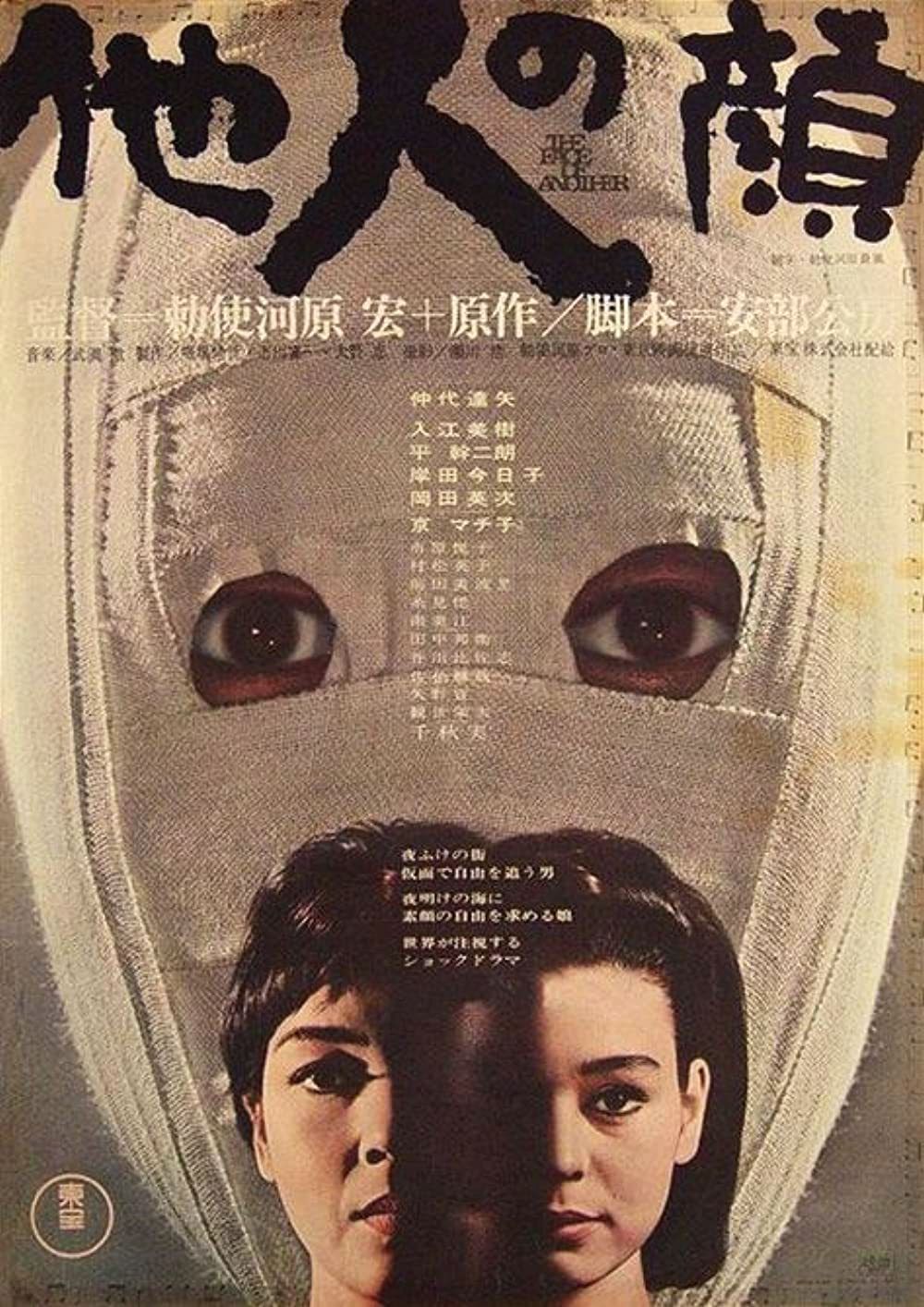"Teshigahara's themes were non-communication and isolation; his characters often share the frame, but inhabit different worlds… The investigation of these themes from both political and existential perspectives made Teshigahara's small body of work extremely rich and complex in implication; he was also one of the most imaginative visual stylists of the Japanese New Wave." - A Critical Handbook of Japanese Film Directors (Alexander Jacoby, 2013)
Hiroshi Teshigahara
Director
(1927-2001) Born January 28, Chiyoda, Tokyo, Japan
(1927-2001) Born January 28, Chiyoda, Tokyo, Japan
Key Production Country: Japan
Key Genres: Drama, Avant-garde/Experimental, Psychological Thriller, Thriller, Crime, Psychological Drama
Key Collaborators: Tôru Takemitsu (Composer), Kyôko Kishida (Leading Actor), Kôbô Abe (Screenwriter), Tadashi Ôno (Producer), Hiroshi Segawa (Cinematographer), Sen Yano (Character Actor), Hisashi Igawa (Character Actor), Eiji Okada (Leading Actor), Kiichi Ichikawa (Producer), Fusako Shuzui (Editor), Masao Yamazaki (Production Designer), Kunie Tanaka (Character Actor)
Key Genres: Drama, Avant-garde/Experimental, Psychological Thriller, Thriller, Crime, Psychological Drama
Key Collaborators: Tôru Takemitsu (Composer), Kyôko Kishida (Leading Actor), Kôbô Abe (Screenwriter), Tadashi Ôno (Producer), Hiroshi Segawa (Cinematographer), Sen Yano (Character Actor), Hisashi Igawa (Character Actor), Eiji Okada (Leading Actor), Kiichi Ichikawa (Producer), Fusako Shuzui (Editor), Masao Yamazaki (Production Designer), Kunie Tanaka (Character Actor)
"Director of Japanese avant-garde cinema; playful and challenging melding of genres; collaboration with composer Tôru Takemitsu; lush use of color." - Richard Bell (501 Movie Directors, 2007)
"One of the major directors to emerge in Japan during the 1960s, Hiroshi Teshigahara stands outside of the industry: directing films is but one of the many ways he has pursued a commitment to art, and he has made only films of his own choosing. After studying painting at Tokyo Fine Arts Institute, in 1950 Teshigahara organized the Seiki ("Century") group of artists and intellectuals who shared an interest in avant-garde writing, theater, and art. He turned to filmmaking in 1953, and found as mentors Fumio Kamei, a leading documentary director admired for his uncompromising socialist stance, and Keisuke Kinoshita. Teshigahara is the son of a highly respected ikebana artist who founded the Sogetsu school, and one can see the influence of this expressive, experimental approach to a traditional art in the sculptural plasticity of his images." - BAMPFA, 2001

Woman in the Dunes (1964)
"Teshigahara studied painting at the Tokyo Art Institute, then worked on a number of documentary shorts during the Fifties before setting up his own company to produce his first feature, Pitfall. His second feature, the powerful, allegorical and highly erotic Woman of the Dunes, was based on the novel by Kôbô Abe… A remarkable work which won the Special Jury Prize at Cannes and was nominated for a Best Foreign Film Oscar, it proved a one-shot effort, and Teshigahara was never able to match its success." - The Illustrated Who's Who of the Cinema, 1983
"One of the most acclaimed Japanese directors of all time, Hiroshi Teshigahara distinguished himself in the 1960s with a series of sinuous, atmospheric, and daring films. With enigmatic art-house touchstones like the existential ghost story Pitfall, the shocking erotic fable Woman in the Dunes, and the the sci-fi–tinged nightmare The Face of Another—Kafkaesque portraits of identities in peril made in collaboration with novelist and screenwriter Kobo Abe—he captivated mainstream audiences while also touching the edges of the Japanese avant-garde. Meanwhile, his bold visual sensibility and wide-ranging appreciation for the arts found expression in his striking documentary works, most notably the dazzling architectural rhapsody Antonio Gaudí." - The Criterion Channel
"His work reveals a fondness for bizarre subject matter, interlaced with elements of fantasy, even surrealism, all of which were evident in his first feature The Pitfall (1962), which combined social documentary with a ghost story. Woman of the Dunes (1964) is probably his best work, with its pervasive atmosphere of shifting sands, sultry heat and a quirkily developed relationship between a scientist and a strange lady who lives in a sand-pit, all magnificently shot with that fastidious Japanese attention to physical detail. The succeeding films, The Face of Another (1966) and The Man Without a Map (1968), continued his exploration of ambiguous relationships coupled with sinister undertones, but were marred by rather pretentious moralizing." - John Gillett (The International Encyclopedia of Film, 1972)
Selected Filmography
{{row.titlelong}}
Hiroshi Teshigahara / Favourite Films
L'Âge d'or (1930) Luis Buñuel, L'Argent (1983) Robert Bresson, Bad Boys (1961) Susumu Hani, Los Olvidados (1950) Luis Buñuel, Record of Blood: Sunagawa (1957) Fumio Kamei, Weekend (1967) Jean-Luc Godard, Wings of Desire (1987) Wim Wenders.
Source: Roll Over Avant-Garde [Book] (1989)
L'Âge d'or (1930) Luis Buñuel, L'Argent (1983) Robert Bresson, Bad Boys (1961) Susumu Hani, Los Olvidados (1950) Luis Buñuel, Record of Blood: Sunagawa (1957) Fumio Kamei, Weekend (1967) Jean-Luc Godard, Wings of Desire (1987) Wim Wenders.
Source: Roll Over Avant-Garde [Book] (1989)
Hiroshi Teshigahara / Fan Club
Mike D'Angelo, Andrey Zvyagintsev, David Flint, Andrew Simpson, Łukasz Mańkowski, Andrei Tarkovsky.
Mike D'Angelo, Andrey Zvyagintsev, David Flint, Andrew Simpson, Łukasz Mańkowski, Andrei Tarkovsky.
"Fan Club"
These film critics/filmmakers have, on multiple occasions, selected this director’s work within film ballots/lists they have submitted.
These film critics/filmmakers have, on multiple occasions, selected this director’s work within film ballots/lists they have submitted.


